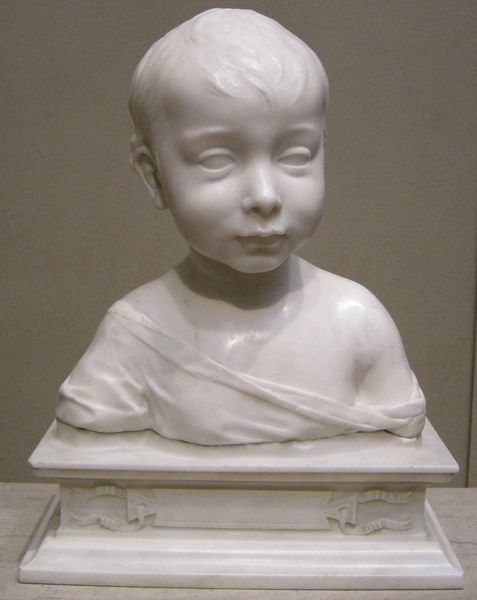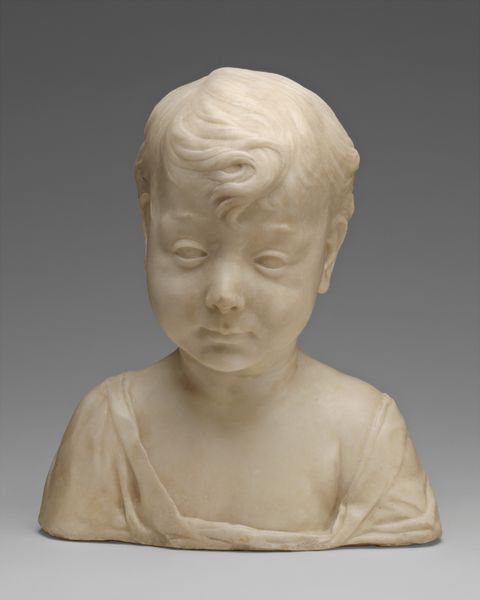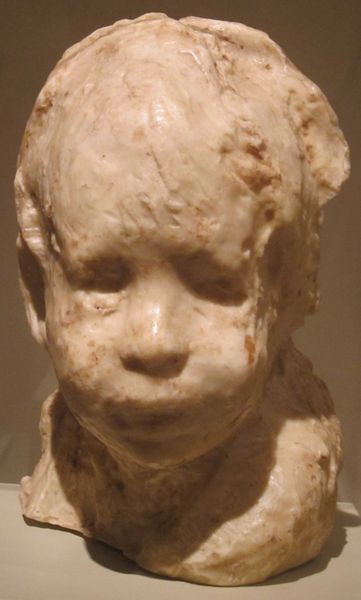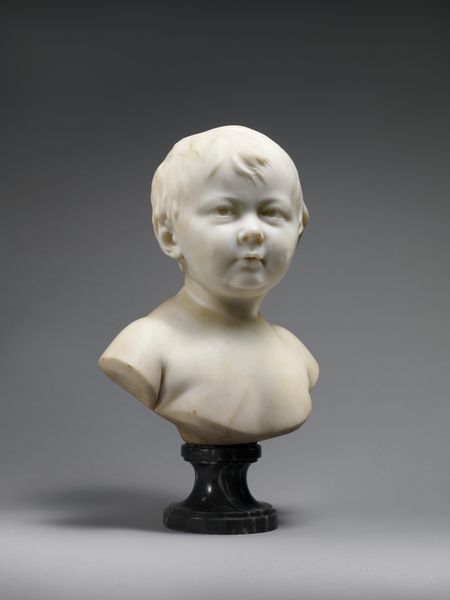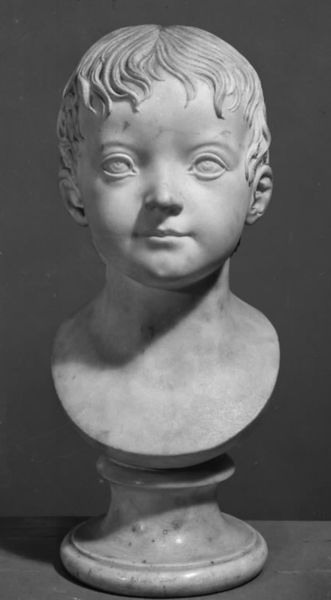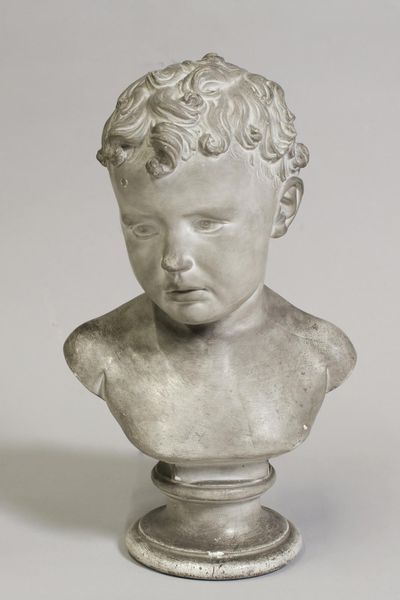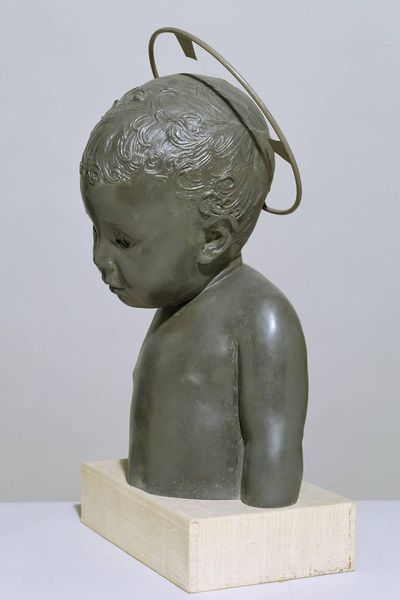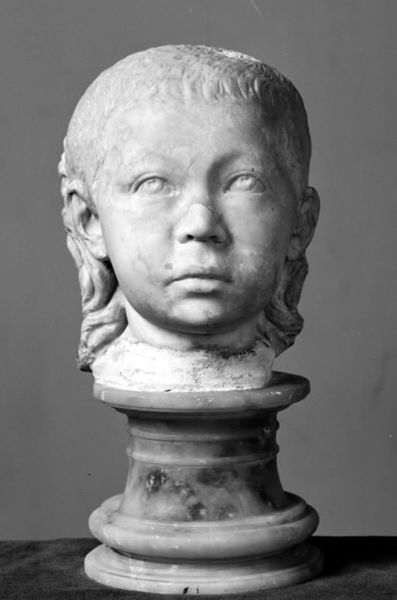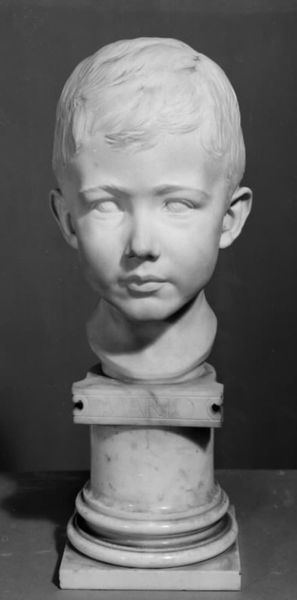
carving, sculpture, marble
#
portrait
#
statue
#
carving
#
head
#
sculpture
#
sculptural image
#
figuration
#
male figure
#
sculpture
#
marble
#
italian-renaissance
#
statue
Copyright: Public domain
Editor: This is Desiderio da Settignano's *Cristo Fanciullo*, carved around 1460. It's a marble bust of a young boy, likely intended to be the Christ child. What I find most striking is the wistful, almost melancholic expression on his face. How do you interpret this work within the context of the Italian Renaissance? Curator: The poignancy you observe is central. The bust embodies a key Renaissance shift, away from purely divine depictions toward humanized religious figures. How do you think the location of this piece may change how audiences interact with the artwork? Editor: You mean, if this statue was in a church, rather than a museum? I imagine in a church, one might be moved more by devotional considerations. Here, one studies its artistic qualities. Curator: Precisely. Consider also the socio-political context. The mid-15th century was a period of both flourishing art patronage and social stratification. Sculptures like this often adorned the homes of wealthy families, serving as symbols of piety and cultural sophistication. Would the boy's expression seem as melancholic to the original owners? Editor: It’s a good point. It becomes less about pure devotion, and more about their status as patrons of the arts, right? Did these wealthy families necessarily see themselves as devout? Curator: Their piety would certainly be part of how they wished to be perceived, both by themselves and others. Does understanding this social context affect your appreciation of the sculpture now? Editor: Absolutely. It enriches the way I look at it. Before, I was focused solely on the aesthetic aspect of the marble. Now I consider the politics surrounding such imagery and artistic expressions. Curator: Indeed. Art exists within and reflects societal structures, influencing and being influenced by cultural forces. That melancholic expression becomes a statement, intentional or otherwise, on the state of affairs, right? Editor: Thanks, I’ll definitely carry that with me.
Comments
No comments
Be the first to comment and join the conversation on the ultimate creative platform.
